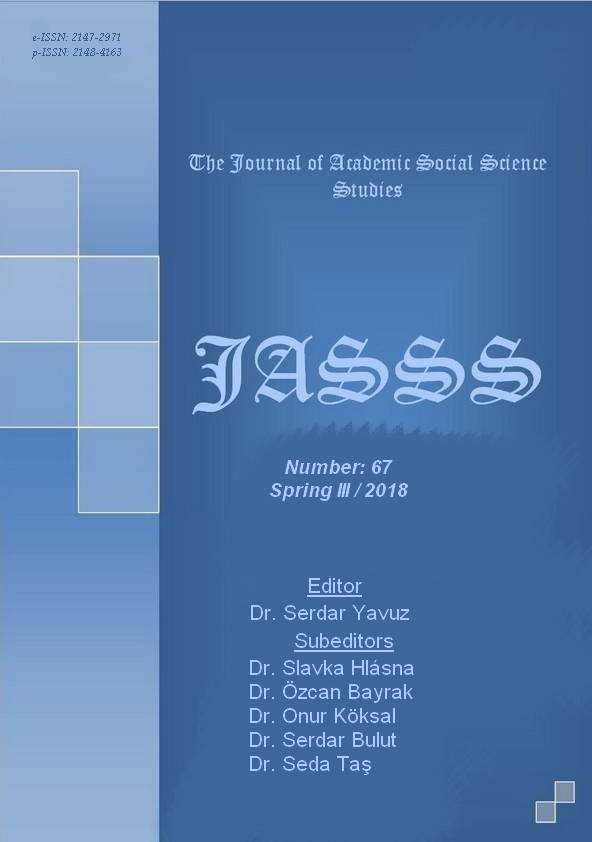SEKİZİNCİ SINIF ÖĞRENCİLERİNİN KARŞILAŞTIRMA PROBLEMLERİNİ ÇÖZMEDE SEZGİSEL KURAL KULLANIMLARININ İNCELENMESİ
Author :
Abstract
Öğrenmeye etki eden faktörler arasında öğrenen bireyin sezgilerinin önemi tartışılmazdır. Matematik ve fen eğitiminde sezgisel kural teorisi adıyla bilinen teoriye göre bireylerin karşılaştıkları kavramsal olarak ilişkili olmayan durumlarda bazı benzer tepkiler vermeleri ortak bazı sezgisel kuralların etkisinde kalmalarından kaynaklanmaktadır. Bu çalışmanın amacı 8.sınıf öğrencilerinin farklı türde karşılaştırma problemlerine verdikleri cevapların ‘aynı A - aynı B’ ve ‘daha fazla A - daha fazla B’ sezgisel kuralları açısından incelenmesidir. Araştırmada nicel ve nitel araştırma yöntemlerinin birlikte kullanıldığı karma yöntem uygulanmıştır. Çalışma grubu kolay ulaşılabilir örnekleme yöntemiyle belirlenmiştir. Katılımcılar İstanbul ili Anadolu yakasındaki bir devlet ortaokulunun 8. sınıfına devam eden 20’si kız, 10’u erkek toplam 30 öğrencidir. Araştırma verileri çoktan seçmeli 10 sorudan oluşan Sezgisel Kural Testi ile toplanmıştır. Sorulardan 5’i aynı A – aynı B, 5’i ise daha fazla A – daha fazla B sezgisel kurallarını ölçme amacına yöneliktir. Her bir soruda öğrenciler doğru olduğunu düşündükleri seçeneği işaretlemelerinin yanında seçimlerini gerekçelendirmelerinin istendiği açıklama bölümünü doldurmuşlar, böylece araştırmaya nitel veri sağlanmıştır. Verilerin nicel analizinde her bir soru için doğru seçeneği ve sezgisel kurala ilişkin seçeneği işaretleyen öğrencilerin frekans ve yüzde değerleri hesaplanmıştır. Nitel analiz kısmında ise öğrencilerin yaptıkları açıklamalar cevapla aynı doğrultuda ve cevapla tutarsız şeklinde kodlanarak bunlara ait yüzde ve frekans değerleri hesaplanmıştır. Bulgular öğrencilerin testteki sorularda yoklanması amaçlanan sezgisel kurallara yönelik seçenekleri işaretleme yüzdelerinin %20 ile %66,7 arasında değiştiğini göstermiştir. Sezgisel olarak düzenlenen seçeneği işaretleyen öğrencilerin açıklamalarında büyük çoğunlukla ilgili sezgisel kurala yönelik karakteristik ifadeler kullandıkları görülmüştür.
Keywords
Abstract
Among the factors which affect learning, the importance of the learner’s intuitions is indisputable. In mathematics and science education according to a theory known as intuitive rules theory, individuals’ similar reactions to conceptually unrelated situations stem from their being affected by some common intuitive rules. The aim of this study is to examine the 8th grade students’ answers to different kinds of comparison questions in terms of “same A – same B” and “more A – more B” intuitive rules. In the study, mixed method in which quantitative and qualitative research methods are used together was applied. Sample of the study was determined by available sampling method. Participants were 30 8th grade students 20 of which was female and 10 of which was male attending to a state middle school in Anatolian side of İstanbul. Data was collected through Intuitive Rules Test which consists of 10 multiple choice questions. 5 of the questions aimed at measuring “same A – same B” rule and 5 of it aimed at measuring “more A – more B” intuitive rule. In each question, besides marking the alternative they think as the correct answer, the students filled in the explanation part in which they are expected to justify their choice; so, qualitative data was provided for the study. For the quantitative analysis of data, in each question the frequency and percentages of students who marked the correct alternative and who marked the alternative related with the intuitive rule were calculated. In the qualitative part of the analysis, the students’ explanations were coded as either “in line with the answer” or “inconsistent with the answer” and the frequency and percentages of these were calculated. Findings showed that the percentage of students’ marking the alternative related to the intuitive rules was between 20% and 66,7%. Students who marked alternatives designed for the intuitive rules often used characteristic expressions related to those intuitive rules.





